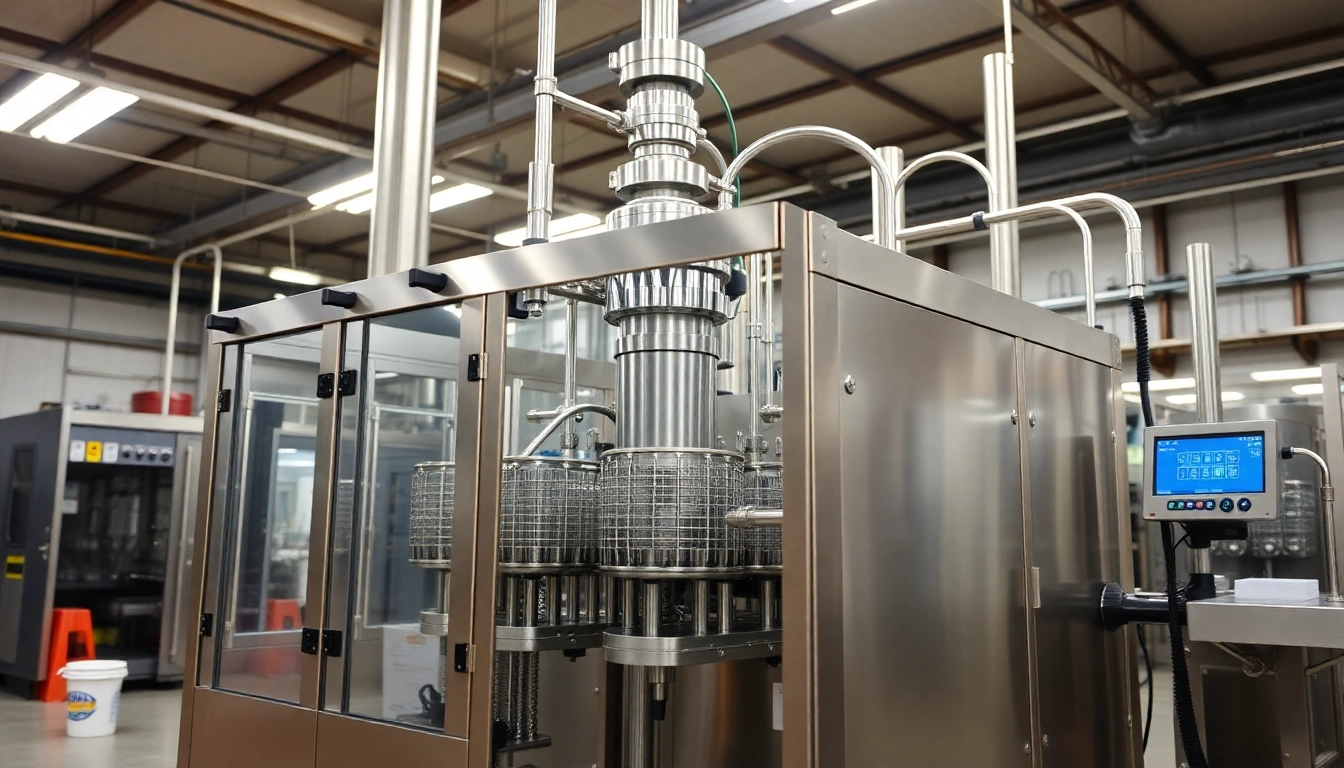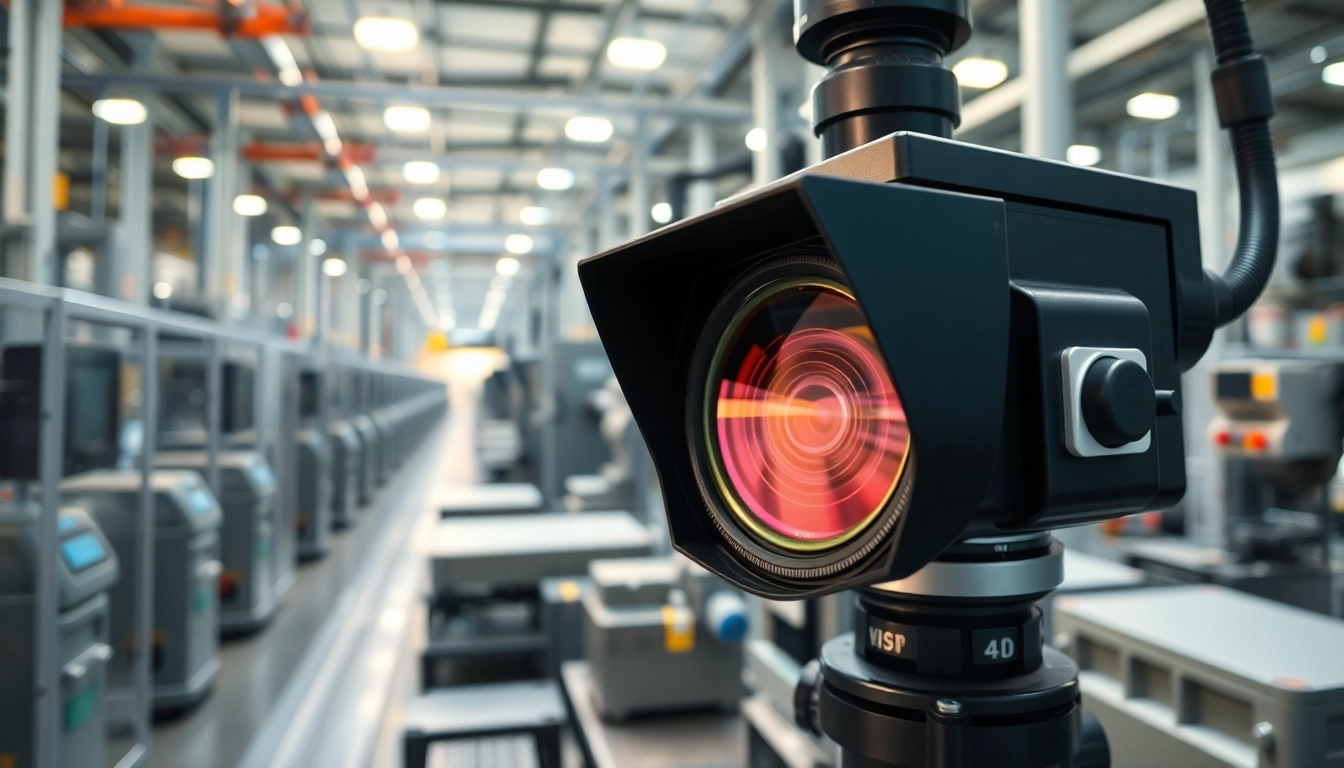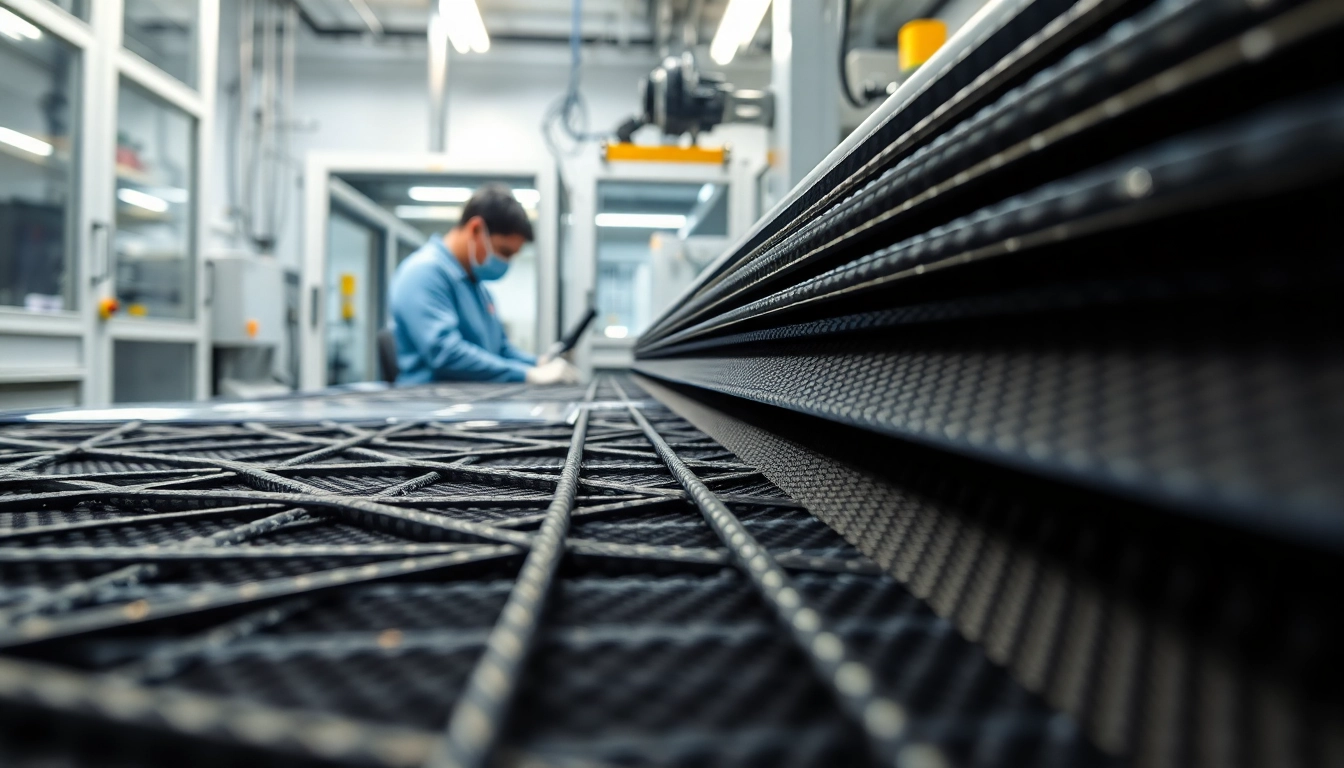Understanding Filling Machines
What is a Filling Machine?
A Filling Machine is a critical piece of equipment designed to automate the process of filling containers with various substances. It plays a vital role in manufacturing and packaging across multiple industries, including food and beverages, cosmetics, pharmaceuticals, and chemicals. A filling machine streamlines production, minimizes waste, and enhances the accuracy of filling, ensuring that each container is filled to the desired level. The technology behind filling machines has evolved significantly, allowing for greater precision, speed, and versatility to accommodate different types of products and packaging sizes.
Key Types of Filling Machines
Filling machines can be categorized into several types based on their operation, the nature of the product being filled, and the level of automation. Understanding these types is essential for selecting the right machine for specific production needs. The main types include:
- Volumetric Filling Machines: These machines fill containers based on a predetermined volume. They are suitable for both liquids and dry products. Volumetric fillers are known for their speed and efficiency.
- Pneumatic Filling Machines: These machines use compressed air to fill containers, offering precise dosing for liquids and powders. They are commonly used in food, beverage, and chemical applications.
- Gravity Filling Machines: Utilizing gravity to fill containers, these machines are ideal for low-viscosity liquids. They work well for products like water, juice, or wine.
- Positive Displacement Filling Machines: These machines use a piston or diaphragm to accurately dispense a set quantity of liquid, making them ideal for thicker liquids and substances that do not flow easily.
- Automatic vs. Semi-Automatic Filling Machines: Automatic machines require minimal human intervention and can handle large volumes efficiently, while semi-automatic machines require some manual operation, making them suitable for smaller production scales.
How Filling Machines Work
Filling machines operate through a series of steps to achieve accurate filling. The basic process involves:
- Container Positioning: The container is placed on the filling line. Sensors or mechanical systems ensure that each container is correctly positioned before filling commences.
- Filling Cycle Initiation: Once the container is in place, the filling cycle is started, either manually or automatically, depending on the type of machine.
- Product Transfer: The filling machine transfers the product from its source (such as a tank or hopper) to the container. This can be done through gravity, a pump, or pneumatic means, depending on the design of the filling machine.
- Volume Measurement: The machine measures the correct volume of product to ensure consistency. Any discrepancies trigger alarms or adjustments in automatic models.
- Sealing or Capping: After filling, the containers are sealed or capped to maintain product freshness and quality. Some machines integrate this as part of the filling process.
Choosing the Right Filling Machine for Your Needs
Assessing Your Production Scale
Choosing the right filling machine begins with an assessment of your production scale. Understanding whether your manufacturing process is small, medium, or large-scale is vital to select a machine that meets your specific requirements:
- Small Scale: For artisanal producers or start-ups, semi-automatic filling machines may be sufficient. These machines offer flexibility and can be operated by a small workforce without requiring extensive investment.
- Medium Scale: Businesses experiencing growth may opt for semi-automatic or fully automatic machines that can enhance efficiency without extensive capital expenditure.
- Large Scale: High-volume productions necessitate fully automatic filling lines capable of operating at high speeds with minimal human intervention, ensuring consistency and efficiency.
Identifying Product Specifications
Understanding the specifics of the product you plan to fill is another crucial aspect. Factors such as viscosity, temperature, and chemical composition dictate the type of filling machine most suitable for your needs:
- Viscosity: Thicker products may require positive displacement fillers or piston machines to manage the flow effectively.
- Temperature: For hot-filled products, machines must withstand higher temperatures without causing degradation to the filling equipment.
- Foaming and Volatility: Products that foam or are volatile may need machines equipped with specialized nozzles and filling methods to prevent excess foaming and spillage during filling.
Comparing Automatic and Semi-Automatic Options
When it comes to automation, filling machines are available in two primary categories: automatic and semi-automatic. Each has its advantages and considerations:
- Semi-Automatic Machines:
- Lower initial investment costs.
- Suitable for smaller production runs and varied product lines.
- Require skilled operators for effective functioning.
- Automatic Machines:
- Higher throughput and efficiency, suitable for high-volume productions.
- Integrated systems with multifunctional capabilities (filling, capping, labeling).
- Initial higher costs but better ROI over time through reduced labor costs.
Installation and Maintenance Best Practices
Site Preparation for Filling Machines
Proper installation of filling machines is essential for optimal performance. Site preparation should include:
- Space Allocation: Ensure there is enough space for the machine, including room for operation, maintenance, and safe access.
- Utilities: Verify that necessary utilities (electricity, water, air) are available and compliant with the machine’s requirements.
- Environmental Control: Maintain a clean and temperature-controlled environment to protect both the machine and the products.
Routine Maintenance Tips
Regular maintenance prolongs the lifecycle of your filling machines and ensures consistent performance. Key maintenance practices include:
- Regular Cleaning: Establish cleaning protocols to prevent contamination, especially for food and beverage applications.
- Inspection: Conduct routine checks on mechanical components for wear and tear, ensuring replacement parts are readily available.
- Lubrication: Keep moving parts lubricated to minimize friction and potential breakdowns.
- Software Updates: Ensure that any software controlling the machinery is updated to safeguard against bugs and improve functionality.
Common Troubleshooting Steps
Even well-maintained filling machines can encounter issues. Some common problems and their troubleshooting steps include:
- Inconsistent Filling Levels: Check for blockages in the fill nozzles and ensure the measurement settings are properly calibrated.
- Leakages: Inspect seals and gaskets regularly and ensure they are in good condition to prevent product loss.
- Machine Jams: Regularly clean the feed mechanisms and check for misalignments that can cause jams.
Enhancing Efficiency with Filling Machines
Optimizing Production Workflow
Efficiency in filling operations is paramount. To optimize your production workflow, consider the following strategies:
- Integration with Other Equipment: Connect filling machines to labeling, capping, and packaging machines to create an uninterrupted production line.
- Scheduling Maintenance: Perform maintenance during off-peak hours to reduce downtime.
- Utilizing Automation: Invest in automation where feasible, which not only speeds up production but also reduces the margin of human error.
Integrating Technology for Improved Accuracy
Advancements in technology can greatly improve the precision and reliability of filling machines. Consider integrating the following technologies:
- Load Cells: These devices can provide real-time weight measurements, allowing for precise filling regardless of material density variations.
- Vision Systems: Employ camera systems to inspect fill levels and verify container placement, improving overall quality control.
- IoT Connectivity: Utilize Internet of Things (IoT) capabilities for real-time monitoring, which can alert operators to issues before they become significant problems.
Monitoring Performance Metrics
Utilizing performance metrics helps in understanding the efficiency and effectiveness of your filling machines. Relevant metrics to monitor include:
- Output Rate: Measure how many containers are filled within a specific timeframe.
- Error Rates: Track how often mistakes occur, including under-filling or over-filling.
- Downtime: Keep a log of machine downtime to identify patterns and implement solutions for reducing it.
Future Trends in Filling Machine Technology
Innovations in Filling Techniques
The future of filling machines is bright, with continual innovations expected in the sector. Emerging trends include:
- Smart Filling Machines: Integration of AI and machine learning for predictive maintenance, optimizing operation automatically based on historical data.
- Modular Machines: Machines that can be easily upgraded with new technologies, allowing businesses to adapt to changing needs without extensive investment.
- Robotic Automation: Collaboration with robotics in filling processes to improve speed and accuracy, particularly in high-tech manufacturing environments.
Sustainability Practices in Machinery
As industries strive for more sustainable practices, filling machines are no exception. Innovations focusing on sustainability include:
- Energy Efficient Designs: Development of machines that consume less energy and have lower environmental footprints.
- Reduction of Waste: Improved filling accuracy that minimizes product waste and enables reusable and recyclable packaging options.
- Eco-Friendly Materials: Increased use of sustainable materials in the construction of filling machines.
Custom Solutions for Diverse Industries
The need for customized filling solutions is growing as industries evolve. Key aspects of creating custom solutions include:
- Tailored Designs: Custom machines built specifically for unique product specifications and production lines.
- Consultation with Industry Experts: Collaborating with manufacturers who understand specific requirements and can offer personalized solutions.
- Flexibility: Machines that can be easily adjusted or converted for different products, allowing businesses to diversify offerings without significant investments in new equipment.



